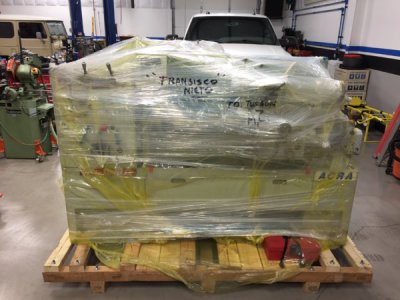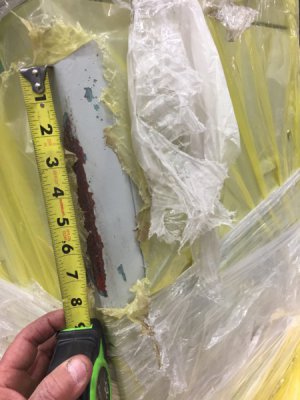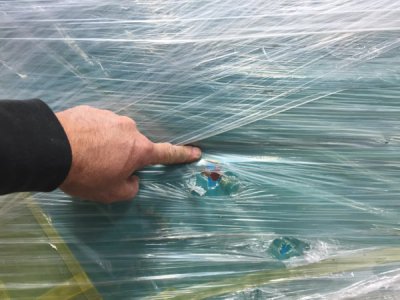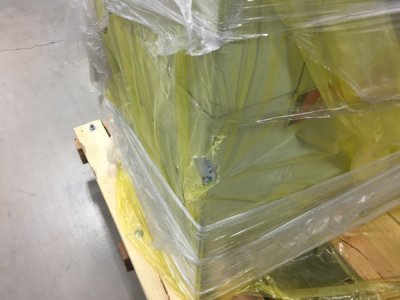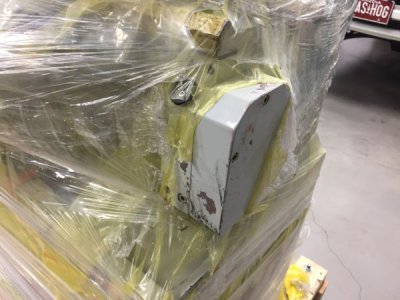Hi Greg,
I was at my limits on that 18mm bolt man, It worked out in the end. Yeah, vehicles last a long time in this desert climate. Here in Tucson we have the worlds largest military aircraft boneyard. Many of them can return to service in under a week while others are cannibalized for parts, all due to the climate.
So I tried the pressing tool but all I achieved was pushing the machine

. I guess those babies are tighter than hell. I have one more trick up my sleeve but I like your suggestion on the all thread. I do have some 3/8" and 3/4" on hand.
This is the backer for the jack. It has four jackscrews for fine tuning the alignment. The fork lift has tilt, side shift and obviously up/down so I can match the levels on both machine and forks. I have large bollard at the main door to keep the building from damage. They are set 36" deep with close to 700 pounds of concrete plus filled and a apron with rebar poured after setting them. I'm thinking I could set the machine next to the ballard with a 4x4 between the machine and bollard to prevent pushing while pressing from the opposite end.
Ran out of time today and back on shift tomorrow so Saturday will be the day.
The angle iron backer for the 4 ton bottle jack.
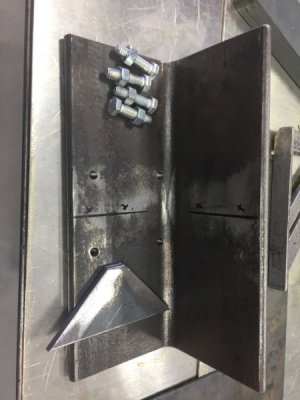
Stayed pretty square after welding the gusset.
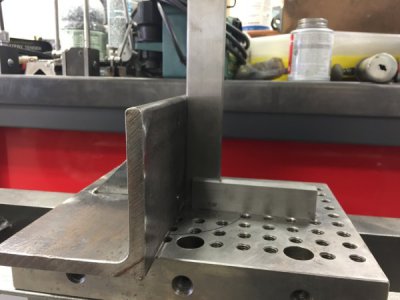
Here you can see the four 5/16-18 threaded holes for the jackscrews.
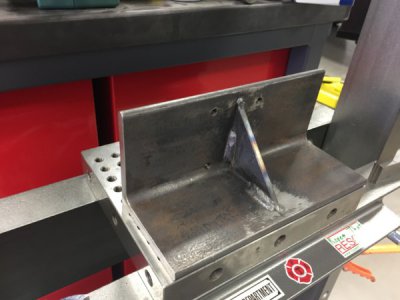
The set up. Notice the the top jackscrews used to fine tune the alignment. I will use a short piece of flat bar to reduce the point load on the jacks flange.
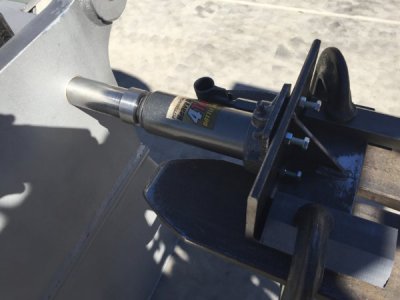
A view from a far. The jack was pushing the machine with every pump. I really thought the machine was heavy enough to perform this task, but live and learn. Those bushings are 3.5" long and tight. Used the two levels to match up the setup.
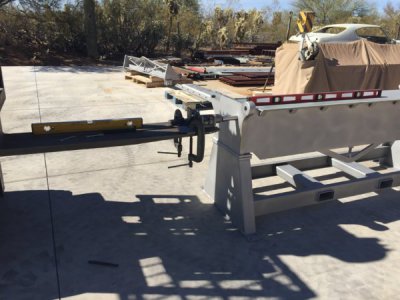
This is the bollard (anchor) I plan on using. 6" schedule 40, I can put a torpedo level on it while pressing to see if it starts to deflect.
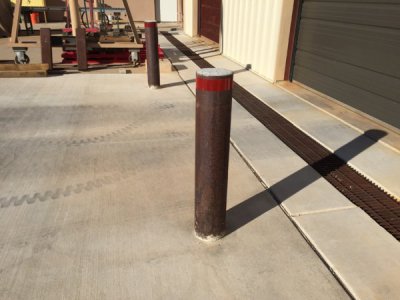
Please feel free to opine. Plan C will be what Greg suggested, but I'll need to re-chuck the press too to thread for the rod.
Thanks guys.
Paco








 Thank you.
Thank you.